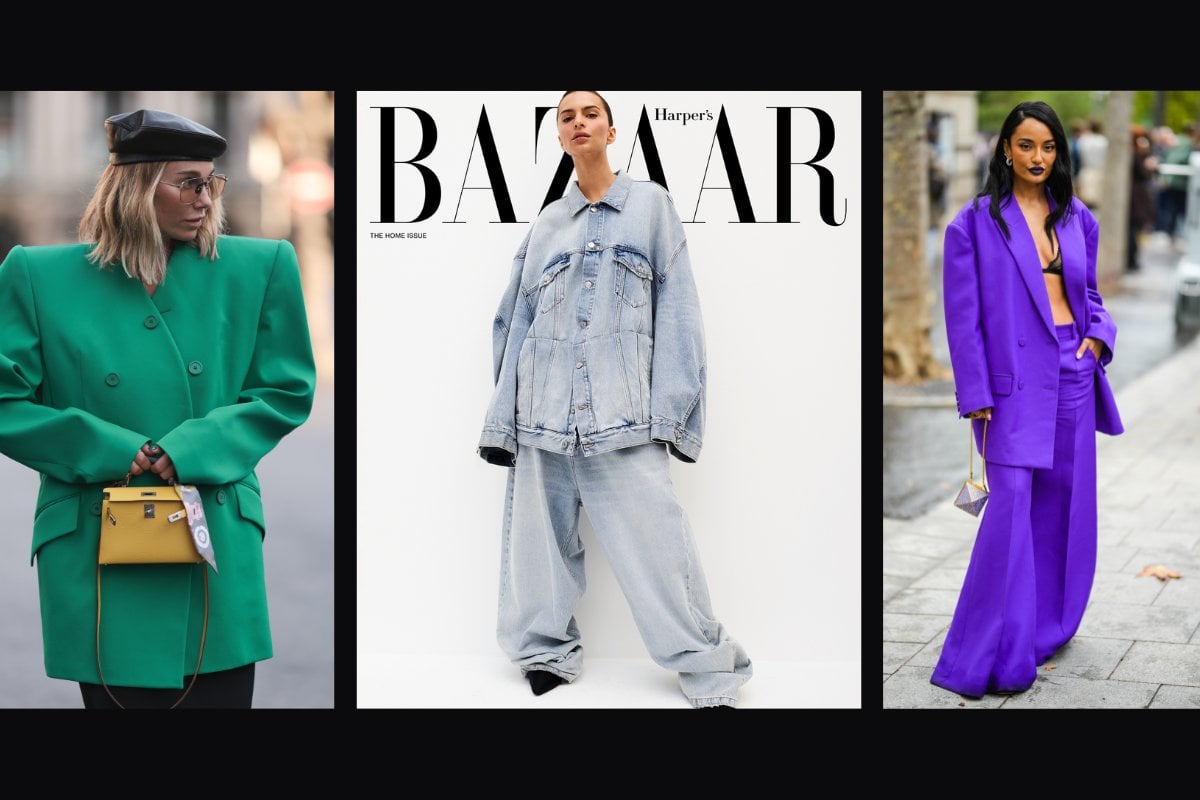
On the front cover of Harper's Bazaar US, Emily Ratajkowski wears a head-to-toe denim outfit, her supermodel body swamped in chambray and her baggy jeans puddling on the floor.
The cover image, meticulously chosen to represent what's "now" in fashion, signals the new look of the season: oversized clothing is trending.
Hipster pants designed to hang off the frame; gigantic boxy blazers teamed with chunky flat shoes - all these items are coming to a shopping centre near you. Maybe you're already wearing them.
And yet, at those same shopping centres, the majority of women's clothing stores only stock up to a size 16. Many even stop at a 12.
It begs the question: If it's easy enough to make an oversized garment in-line with the season's trends, why do so many brands only cater to a "straight" size range?
Listen: On this episode of our fashion podcast, What Are You Wearing?, we discuss Australian retail's big problem with sizing. Post continues below.
We're told, historically, that for fashion designers it's an issue of... fabric. To make a larger size requires more of it, therefore it's the consumer that should absorb the cost.
It's something that body positive influencer and activist Lacey-Jade Christie finds increasingly frustrating.
"Brands and the fashion industry at large are always telling plus-size fashion consumers that it's incredibly hard to manufacture clothes in our sizes, yet a size 14 person can now buy a jacket that is three sizes too big for them because it's 'in fashion'. It doesn't make sense," she said.

Top Comments